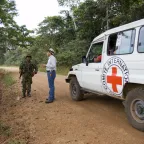Study on customary international humanitarian law: all language versions of the summary article and list of rules
This page contains, free of charge, electronic copies of all language versions of an article, published in English in the International Review of the Red Cross, No. 857, 31 March 2005. The article …






